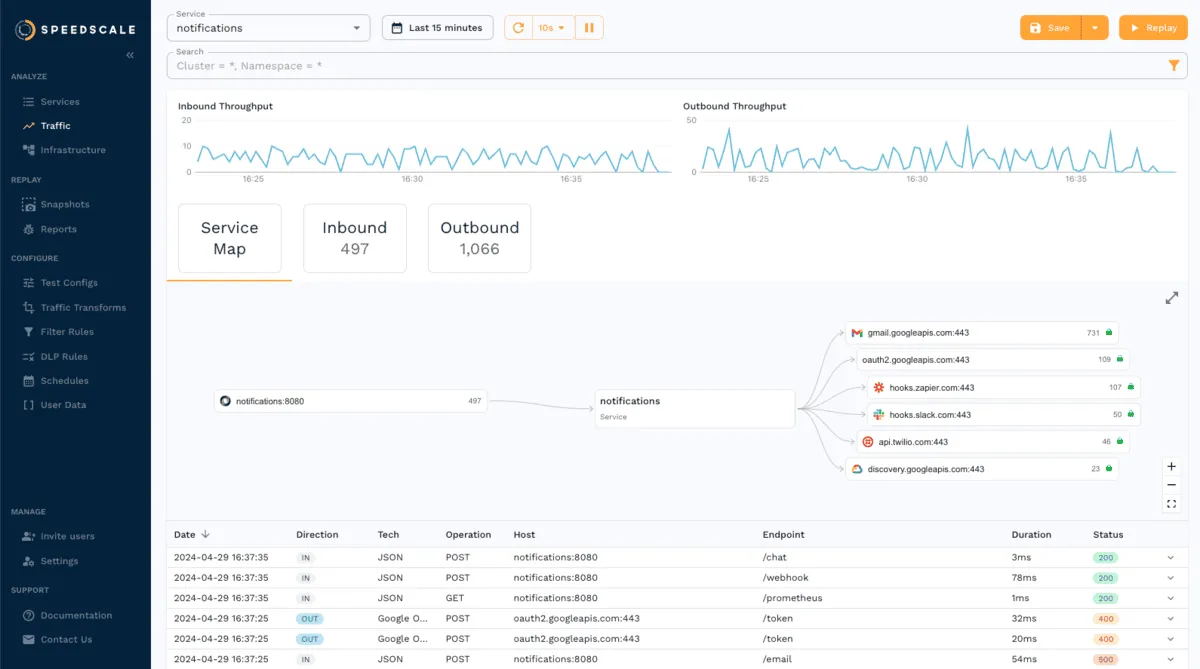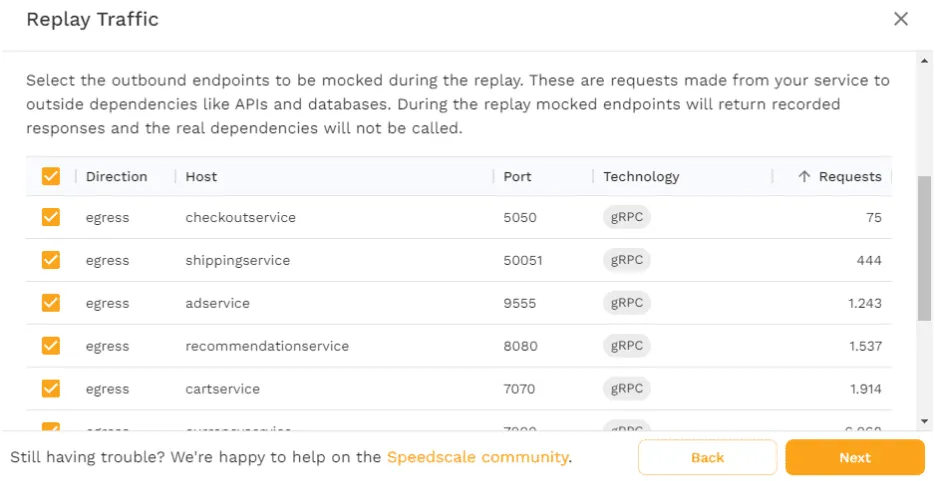Ensuring seamless data flow and robust application performance is crucial in modern networking and cloud computing. Traffic mirroring enables enhanced network observability, allows for effective troubleshooting, and facilitates the testing of new features without interrupting live traffic. It captures and replicates network traffic, providing a powerful solution for maintaining and optimizing network operations. This guide provides a clear overview of traffic mirroring, explaining how it functions within the AWS ecosystem and why it’s important for cloud environments. We’ll cover the benefits, use cases, and potential challenges of traffic mirroring, giving you a thorough understanding of this essential networking tool.
What is Traffic Mirroring?
Traffic mirroring sounds straightforward—it involves capturing network traffic and replicating it to another location. In local networking, this is often called port mirroring or a network tap, but in web applications, this is commonly referred to as traffic capture and replay. While the process is deceptively simple, doing it right can get complex.  Traffic mirroring is a versatile tool used for performance optimization, security threat analysis, application development, debugging, user sentiment analysis, and behavior tracking. Unlike logging, which generally provides call-related information, traffic mirroring gives you a comprehensive overview of the entire ecosystem and application.
Traffic mirroring is a versatile tool used for performance optimization, security threat analysis, application development, debugging, user sentiment analysis, and behavior tracking. Unlike logging, which generally provides call-related information, traffic mirroring gives you a comprehensive overview of the entire ecosystem and application.
How Traffic Mirroring Works
Traffic mirroring captures network traffic and replays it in controlled environments for testing or further analysis. This approach allows developers to model real-world traffic on services without the risks or resource use associated with production environments, enabling realistic testing scenarios with minimal overhead. To set up a traffic mirroring session, start by identifying the traffic mirror source and decide how to filter the traffic effectively for your testing needs. This typically requires a bit of oversight and planning, especially when trying to figure out what you’re actually testing for. For example, if you’re largely interested in security data, it doesn’t make much sense to capture only the data for a single endpoint - you’ll want a more broad base data source, and thus, a more general capture. For feature-specific testing, you can select a tighter inbound and outbound rules for traffic capture, though this narrows the test scope to that specific data alone.  A well-executed session involves configuring the collection point and ensuring that the mirrored data accurately represents your traffic mirror source. This will require setting your collection point, deciding on capturing traffic pre, post, or regardless of authentication and authorization status. By configuring your session carefully, you can gather insightful data without overburdening your resources.
A well-executed session involves configuring the collection point and ensuring that the mirrored data accurately represents your traffic mirror source. This will require setting your collection point, deciding on capturing traffic pre, post, or regardless of authentication and authorization status. By configuring your session carefully, you can gather insightful data without overburdening your resources.  After collecting your data, choosing the right solution is crucial. Tools like Speedscale let you capture and replay data into your system, using real production traffic for accurate development and testing. With numerous traffic replay solutions available, prioritize one that is both proven and trusted. Since this solution will handle your valuable traffic data, it’s essential to select a solution like Speedscale that can assure effectiveness and safety.
After collecting your data, choosing the right solution is crucial. Tools like Speedscale let you capture and replay data into your system, using real production traffic for accurate development and testing. With numerous traffic replay solutions available, prioritize one that is both proven and trusted. Since this solution will handle your valuable traffic data, it’s essential to select a solution like Speedscale that can assure effectiveness and safety.
Traffic Mirroring in the AWS Ecosystem
Amazon Web Services (AWS) has integrated traffic mirroring capabilities into its cloud offerings, enabling users to monitor and analyze traffic within their virtual private clouds (VPCs). AWS Traffic Mirroring allows users to mirror traffic from Elastic Network Interfaces (ENIs) within their EC2 instances through filtering rules, which determine the packets to be monitored. By configuring the ENI as a traffic mirror source, AWS ensures that mirrored data is captured from precisely the intended point in your architecture. From here, you can forward the traffic to a designated traffic mirror target for analysis or storage.  The advantage of using Speedscale is its flexibility; you’re not limited to only the default settings or a rigid, complex solution. It integrates smoothly with EC2 and AWS, bringing together native AWS traffic capture and Speedscale’s replay feature. AWS Traffic Mirroring lets you filter specifically which packets to mirror for analysis. Combined with a network or gateway load balancer, this arrangement guarantees efficient traffic distribution and analysis across different endpoints.
The advantage of using Speedscale is its flexibility; you’re not limited to only the default settings or a rigid, complex solution. It integrates smoothly with EC2 and AWS, bringing together native AWS traffic capture and Speedscale’s replay feature. AWS Traffic Mirroring lets you filter specifically which packets to mirror for analysis. Combined with a network or gateway load balancer, this arrangement guarantees efficient traffic distribution and analysis across different endpoints.
Use Cases of Traffic Mirroring
Traffic mirroring has numerous applications across industries and use cases, including:
- Performance Monitoring: Analyze traffic patterns and identify bottlenecks to optimize application performance.
- Security Analysis: Detect and investigate malicious activities by inspecting mirrored traffic. Monitor outbound traffic for unauthorized data exfiltration or other malicious activities.
- Testing and Debugging: Test new features or updates in a simulated environment without affecting production traffic.
- Compliance Audits: Capture and store network traffic logs to meet regulatory requirements.
- Incident Response: Facilitate rapid investigation of network issues or security breaches by providing granular traffic insights.
Traffic Mirroring in Cloud Environments
In cloud environments, traffic mirroring becomes even more critical due to the distributed nature of workloads and the reliance on virtualized infrastructure. Key aspects of traffic mirroring in the cloud include:
- Scalability: Cloud-native mirroring solutions scale seamlessly with dynamic workloads. In large-scale deployments, using a network load balancer can help distribute the load from mirrored traffic, ensuring no single resource is overwhelmed.
- Integration: Direct integration with cloud services like AWS Traffic Mirroring and Azure Network Watcher.
- Cost Efficiency: Cloud providers often offer pay-as-you-go pricing for traffic mirroring features, ensuring cost-effective deployment.
- Automation: Leverage Infrastructure-as-Code (IaC) to automate the configuration and deployment of traffic mirroring setups.
Benefits of Traffic Mirroring
Traffic mirroring unlocks a ton of benefits for organizations looking to intelligently enhance their network and application performance & operations.
Enhanced Observability
First and foremost, traffic mirroring unlocks a detailed view of network activity that is highly useful for troubleshooting and decision-making. By capturing network traffic from the traffic mirror source, you can thoroughly inspect trends and patterns that suggest areas for improvement or require further analysis. With tools that monitor mirrored traffic, you can gain granular insights into the ecosystem, enabling informed decision-making.
Seamless Testing
Traffic mirroring allows you to test and validate new features in a non-intrusive way using actual production traffic. A traffic mirror session provides realistic data for validating tests while reducing the likelihood of end-user disruptions that could harm your reputation and product sentiment. By leveraging your traffic mirror target, you can ensure that captured traffic is used efficiently for replay and iteration.
Guided Development
Traffic mirroring enhances your development environment with valuable insights, much like it improves testing. By capturing traffic via a network load balancer or other scalable system, you create a body of data that can be analyzed for end-consumer needs. This process enables developers to validate user sentiment without directly polling users, reducing survey fatigue and improving the overall development experience.
Improved Security
Traffic mirroring surfaces potential vectors for attack by capturing network traffic and replaying it for analysis. It can even identify probing attacks or scanning attempts indicative of incoming threats. Proactively identifying these issues at the traffic mirror source can enable real-time threat detection and response, reducing overall risk. Additionally, monitoring outbound traffic within mirrored sessions ensures that sensitive data isn’t being exfiltrated by malicious actors.
Increased Reliability
This process also improves application reliability by surfacing potential issues long before they impact end users. The ability to monitor traffic from a robust traffic mirror session ensures early identification of performance bottlenecks, configuration errors, or unforeseen application behavior. While these benefits enhance security and development, they also significantly boost user trust. Applications that evolve and improve seamlessly without frequent disruptions are more likely to gain adoption and loyalty compared to those that suffer from downtime during each iteration.
Challenges in Traffic Mirroring
Traffic mirroring is not without challenges. While these issues can be effectively navigated with careful planning and execution, organizations must be mindful of resource usage, scalability, and cost to deploy necessary solutions effectively.
Resource Overhead
Mirroring traffic can significantly increase network and storage usage, especially in environments with high traffic volumes. For example, capturing network traffic from a traffic mirror source across multiple endpoints may consume additional bandwidth and processing power. The problem worsens when the mirrored traffic is kept for long durations or subjected to in-depth analysis. To mitigate this, organizations can configure traffic mirror sessions to filter unnecessary data, ensuring only relevant information is captured and replayed.
Cost Implications
Traffic capture can become costly if not set up correctly. The need for additional infrastructure, such as a traffic mirror target or supporting systems like a network load balancer, may introduce unexpected expenses. Cloud-based solutions help alleviate some of these costs through scalable and pay-as-you-go pricing models. However, organizations must evaluate their specific needs carefully and adopt traffic mirror filters to minimize unnecessary data capture and storage expenses.
Scalability Concerns
Legacy systems and on-premises hardware often struggle to handle the dynamic nature of traffic mirroring. For instance, a traffic mirror session designed for small-scale testing may become overwhelmed when applied to high-traffic environments. This is where scalable cloud solutions, such as those integrated with AWS or Azure, come into play. Leveraging a network load balancer ensures that mirrored traffic is distributed efficiently across the system, avoiding bottlenecks and maintaining overall performance.
Complexity in Configuration
Configuring a traffic mirror session can be complex, particularly when deciding which traffic mirror source to use, what traffic to mirror, and how to apply traffic mirror filters effectively. Misconfiguration can lead to incomplete or irrelevant data being captured, reducing the utility of the mirrored traffic. Understanding your organizational goals, whether they relate to security, performance testing, or compliance, is crucial due to this complexity.
Conclusion
Traffic mirroring is an incredibly powerful tool for optimizing your application performance, bolstering your service security, and improving your network observability. With the right tools, you can monitor mirrored traffic effectively, ensuring that your traffic mirror session delivers actionable insights. While traffic mirroring does present some challenges, leveraging the correct solution can mitigate much of this. Speedscale is a versatile and cost-effective solution for traffic mirroring, suitable for both large and small-scale applications. It enables you to capture and replay traffic from diverse sources efficiently. Getting started with Speedscale is quick and easy; you can start a free trial with a full month of enterprise features in just minutes!